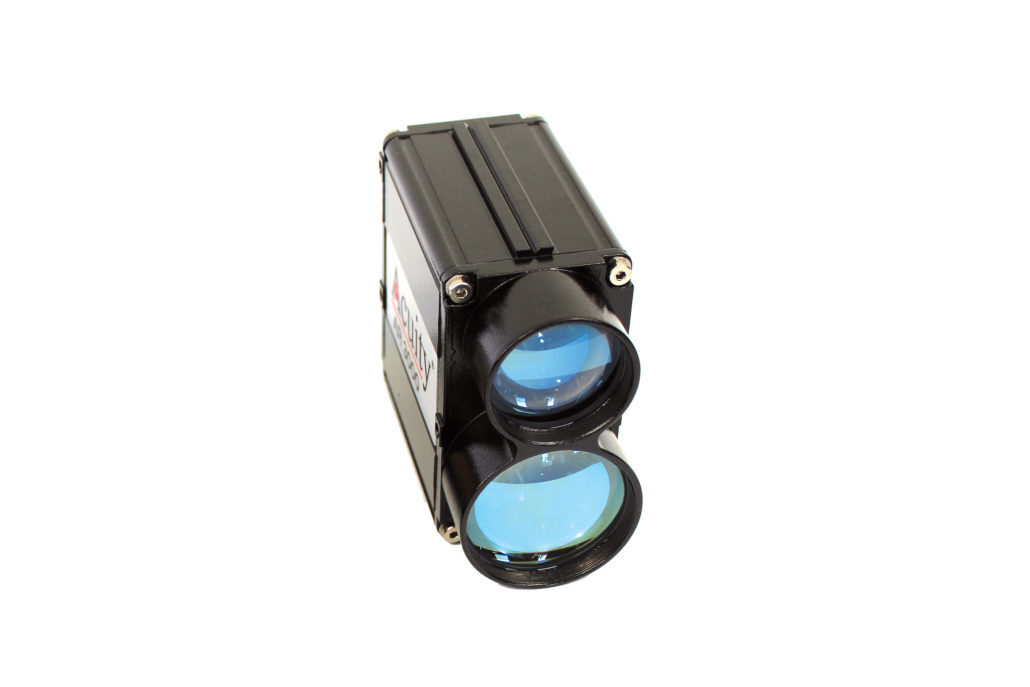Time-of-Flight Laser Sensor Overview – the AR3000 Posted in: AR3000 Distance Measurement Sensor
Last Updated: March 20, 2023

This is a short overview on a time-of-flight laser sensor by using our Acuity AR3000 laser sensor as an example. The Accurange 3000 is one of our longest distance rangefinders and as you can see in this image, the upper lens portion is the transmitter portion where the laser beam comes out, and the bottom lens portion is the collector, where we collect the return reflection from the laser beam.
Some quick facts on the AR3000:
- We have two different models of serial, the RS-232 or RS-422 digital outputs, so this can be plugged right into a computer
- On natural targets, the AR3000 can measure to 300 meters or roughly a thousand feet on natural targets
- If we use a reflector, it can measure out to 3,000 meters (a little bit over two miles long)
If we measure at a hundred measurements per second, our accuracy is plus or minus 20mm which is right at about three-quarters of an inch of accuracy. At the full bandwidth of two thousand measurements a second, we’re a little over plus or minus 2 inches a second.
The AR3000 has a resolution of 1mm or 40 thousandths of an inch. It has a Class-1 invisible infrared laser and it is completely eye safe, so the user doesn’t have to worry about any damage or any harm using this laser beam. We also have a Class-2 visible pilot laser, but in typical applications, the user will only be using it for the initial setup. Once the user has used the Class-2 pilot light for setup, it can be turned off and just utilize the invisible measuring laser. So in summary, there shouldn’t be any problem causing anyone to be distracted as they’re moving through the world getting hit with a laser beam.
The AR3000 is also a very compact design. This laser is what we call a time-of-flight sensor, and like most distance measurement sensors, it measures distance by rapidly modulating and collimating a laser beam and this creates a spot on the target surface. This laser spot is reflected and collected by a lens and focused on a photodiode within the sensor unit. This reflected light returns with a shift in its phase compared with the reference signal and from the amount of phase shift, we can calculate what the distance is very accurately.
Then that distance number is transmitted through serial or an analog output and then the sensor will monitor that distance. So it can be used for distance and we’ve used it before for velocity measurements. In other words, this laser is measuring the speed of light and based upon how long it takes for that light to reflect back, we can time it and calculate the distance to the target. This is as opposed to a laser triangulation sensor which uses triangulation for its measurements.
The anatomy of the compact AR 3000 includes the transmitter, the receiver, and a built-in heater so it can operate in different temperatures and very extreme environmental conditions. The AR3000 is very good for process monitoring, profiling, and position measurement of vehicles. It operates in all lighting conditions and on difficult targets so whether it’s night or day. we shouldn’t have any problems with this measurement device.
Sarah has been our technical support and sales engineer for 5+ years. If you've ever reached out to Acuity Laser for tech support, more than likely, Sarah is the one who helped you.


